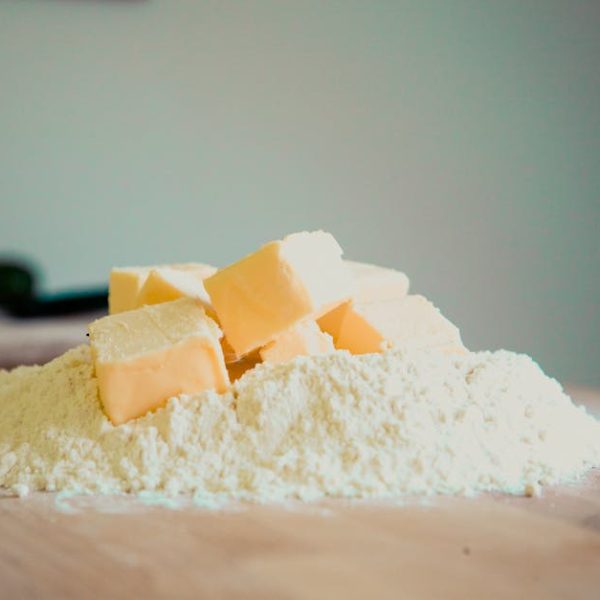Olé to potato salad! This unassuming dish, often featured at picnics, family barbecues, or as a hearty side dish, balances being a flavor packer while also providing satiety. As with any food, storing potato salad correctly is crucial, not only to maintain its original delectability but to guard against potential health hazards associated with foodborne illnesses. Different factors significantly affect potato salad’s shelf life, including the ingredients used, how it’s prepared, and the storage conditions.
Potato Salad Storage Basics
Your potato salad’s longevity greatly depends on how it’s stored. The magic key to keeping potato salad fresh and delectable is using an airtight container, as it helps retain its moisture and shields it from external bacteria. It’s crucial to note that potato salad falls pretty high on the perishable scale – it should not be left at room temperature for more than two hours since bacteria tends to proliferate rapidly. Here are the basics:
- Store in an airtight container immediately after serving.
- Avoid leaving at room temperature over two hours.
- Don’t forget the two-hour rule even while serving; protect it by plunging it in a bed of ice.
Shelf Life of Refrigerated Potato Salad
Just how long can you still dip into that potato salad sitting in your fridge and expect it to taste as if it was just made? The tricky bit about potato salad, specifically homemade, is that it contains loads of ingredients that may have different freshness timelines. Typically, if properly stored, your homemade creation should remain good for three to five days in the refrigerator. Shelf-bought potato salad, on the other hand, can last up to five days past the ‘best by’ date if unopened, or for five days after opening.
- Check for changes in color, smell, or texture. If it seems off, it probably is.
- Is it slimy? Bid it goodbye.
- Smells funky? Hard pass.
Pro Tip: Your health is more important than a scoop of potato salad! If in doubt about its freshness, toss it out.
The Impact of Ingredients on Potato Salad Freshness
The choice of ingredients can significantly affect how long potato salad can last. Fresh, high-quality ingredients will obviously last longer and taste better than lower-quality or older ingredients. High-risk ingredients, like mayonnaise and eggs, have shorter shelf lives and can potentially render the entire salad unsafe. Here are the pros and cons:
- Pros: Fresh ingredients guarantee longer shelf life and better taste.
- Cons: Ingredients past their prime not only compromise the salad’s overall taste but can also be a health risk.
Increasing Potato Salad’s Shelf Life
Ever wished you could keep your potato salad fresh for just a bit longer? Well, you might be in luck. There are a few procedures you can follow to ensure maximum freshness and effectively increase its shelf life. First and foremost, make sure your potato salad goes straight into the refrigerator as soon as it has been served. This is because extreme changes in temperature can encourage bacterial growth and hasten spoilage.
Cleanliness while preparing your salad is also a key factor for lengthening its shelf life. Ensure all your kitchen equipment and surfaces are clean, and your hands are thoroughly washed. Why leave any room for bacterial contamination, right?
Here is a handy checklist for you:
-
- Refrigerate the potato salad immediately after serving.
- Ensure the refrigerator temperature is below 40 degrees Fahrenheit (4 degrees Celsius).
- Don’t mix old and fresh potato salad. The ‘freshness’ isn’t contagious–it’s the other way around, actually.
- Ensure food handling and kitchen sanitation is top-notch to avoid cross-contamination.
Freezing Potato Salad for Longer Preservation
While you may wish your potato salad could stay fresh forever, unfortunately, that’s impossible. However, freezing potato salad allows you to extend its shelf life significantly. But how will this impact the texture and taste?
A fair warning: The texture of potato salad may suffer when frozen, mainly if it contains high-moisture ingredients like cucumbers or radishes. Mayonnaise-based dressings may separate and become watery when thawed. However, the taste should largely remain unaffected.
Take a look at this table providing a comparison of potato salad at different stages:
| Freshly-Made | Refrigerated | Frozen | |
|---|---|---|---|
| Texture | Firm and creamy | Remains similar | Can become watery |
| Taste | Fresh and savory | Fades slightly | Remains similar |
| Shelf-life | Up to 2 hours | 3-5 days if refrigerated properly | Few months, if frozen and thawed correctly |
Here are some steps to properly freeze and defrost potato salad for best results:
- Portion the salad into smaller, meal-sized parts. This helps with faster thawing and avoids repeated freezing and thawing cycles for leftover portions.
- Store these portions in freezer-safe airtight containers.
- Label your containers with the freezing date. Remember: freezing doesn’t stop bacteria growth–it only slows it down significantly.
- Thaw frozen potato salad in the refrigerator, not at room temperature.
Pro Tip: To maintain the quality of frozen potato salad once defrosted, make sure you use it within two days for optimal freshness and safety. Remember: use your senses. If it does not smell, look, or feel fresh, do not eat it.
Finally, the answer to how long does potato salad last, might be more complicated than you assumed. It entirely depends on how it’s stored, the ingredients used, and whether it has been frozen or not. But we hope this guide has made these considerations clearer for you!
Key Takeaway:
- Potato salad longevity can be influenced by proper storage methods, the quality of used ingredients and preparation hygiene.
- Homemade potato salads last for 3 to 5 days in the fridge, while store-bought ones have a slightly more prolonged freshness period.
- Freezing can significantly extend potato salad’s shelf life, but may compromise its texture.
- High-risk ingredients like mayonnaise and eggs can affect the overall shelf life of the salad, hence their freshness is critical.
Despite the many considerations, there is no need to fret over handling and storing your potato salad. By following these robust guidelines and being mindful of storage times, quality ingredients and preparation hygiene, you’ll enjoy fresh and appetizing potato salad whenever you fancy it. Don’t be afraid to experiment and find what works best for you!
FAQs
Q: How do I know if my potato salad has gone bad?
A: Look out for changes in color, smell, or texture. If the salad appears slimy or possesses a strange odor, it’s time to toss it away.
Q: Can I mix old and fresh potato salad?
A: It’s best to avoid mixing them. The freshness isn’t contagious and the old salad may introduce bacteria to the fresh one.
Q: What’s the best way to store potato salad after serving?
A: Always store potato salad in an airtight container and refrigerate it immediately after serving.
Q: Why shouldn’t I defrost frozen potato salad at room temperature?
A: Thawing at room temperature potentially exposes the salad to temperatures conducive for bacterial growth. Instead, defrost it in the refrigerator.
Q: Does the taste of potato salad change when it’s frozen?
A: The taste primarily remains the same, although the texture might become slightly watery due to the separation of mayonnaise-based dressings.
You’re well-equipped to store your potato salad safely now! Feel free to share this guide and explore more posts on our website for additional kitchen tips and tricks.





